The COVID-19 pandemic dominated the last 12 months and has had a profound effect on all our lives. But it wasn’t the only thing altering our landscape. Here is a selection of some of the stories that shaped the world in 2020 in images.
Final checks
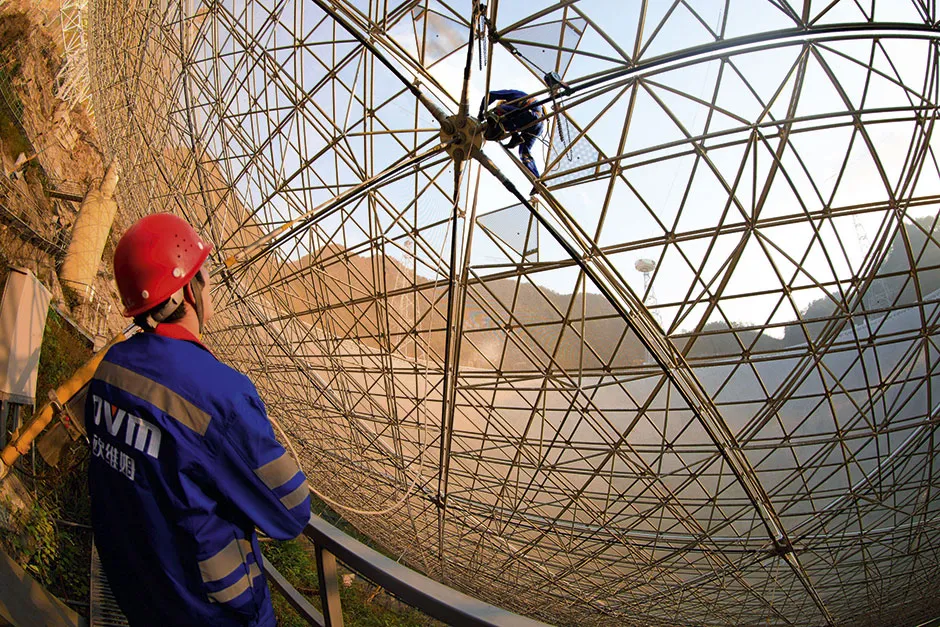
Guizhou, China, 9 January
China’s Five-hundred-meter Aperture Spherical Telescope, or FAST, is the world’s largest and most sensitive radio telescope. Though it saw its first light in September 2016, the enormous telescope was only declared fully operational on 11 January 2020.
In this picture, a worker studies the reflector panels at the end of its three-year trial period, just two days before FAST began observations.
With such a gargantuan dish, focusing the telescope isn’t easy. Even the few millimetres that gravity pulls it out of shape can be enough to blur an image. To get around this, the dish is made up of individual metal panels that can be moved independently to adjust the focus.
Black summer
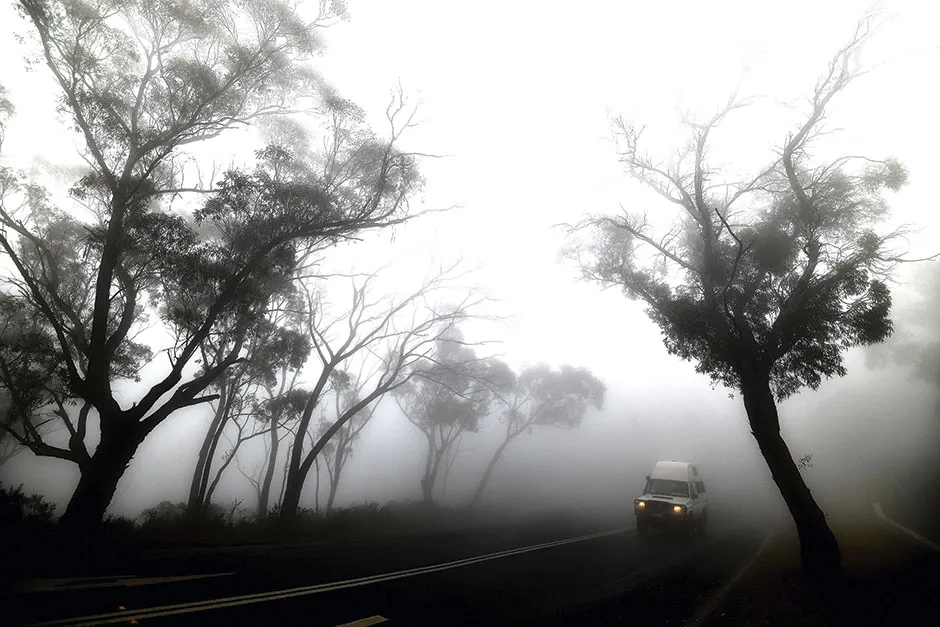
Blue mountains, Australia, 11 January
Much of the Australian bush started the year ablaze, as wildfires that began towards the end of 2019 continued to rage. This shot shows a van crawling through a mix of fog and thick smoke that engulfed the Ruined Castle area of the Blue Mountains, about 75km (45 miles) outside of Sydney.
The fires raged into March, burning an estimated 200,000km2 of land, destroying nearly 6,000 buildings and killing more than 30 people. The environmental cost is more difficult to estimate, but countless animals lost their lives in the flames, with some species believed to have been driven to extinction.
Bush fires can be caused by lightning strikes, or sparks accidentally created by humans. But the hotter, drier climate experienced in Australia in recent years is contributing to the fires becoming more frequent and intense, scientists say.
Eye of the storm
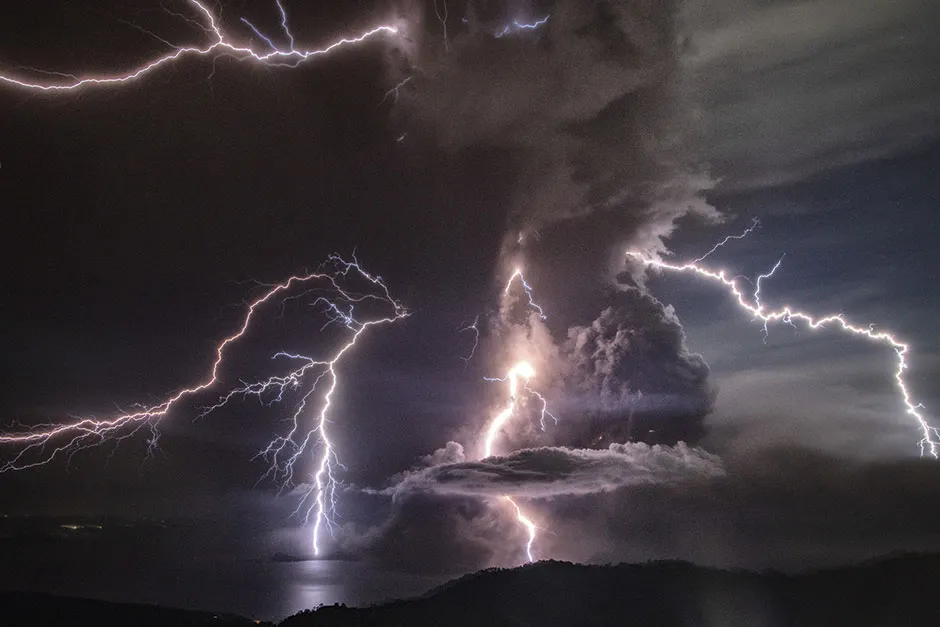
Batangas, Philippines, 12 January
Schools closed, flights cancelled and face masks called for. Sound familiar? This was the situation in January, when large amounts of volcanic ash covered the area surrounding the Taal volcano following its eruption.
A volcanic eruption creates columns of ash in the air, called ash plumes. These plumes contain particles – a mixture of rock, minerals and volcanic glass – which generate electricity when they collide with each other. This causes what’s known as volcanic lightning.
The Taal Volcano Network continues to monitor the volcano’s activity and is recording volcanic earthquakes on a regular basis.
Fly me to the Moon
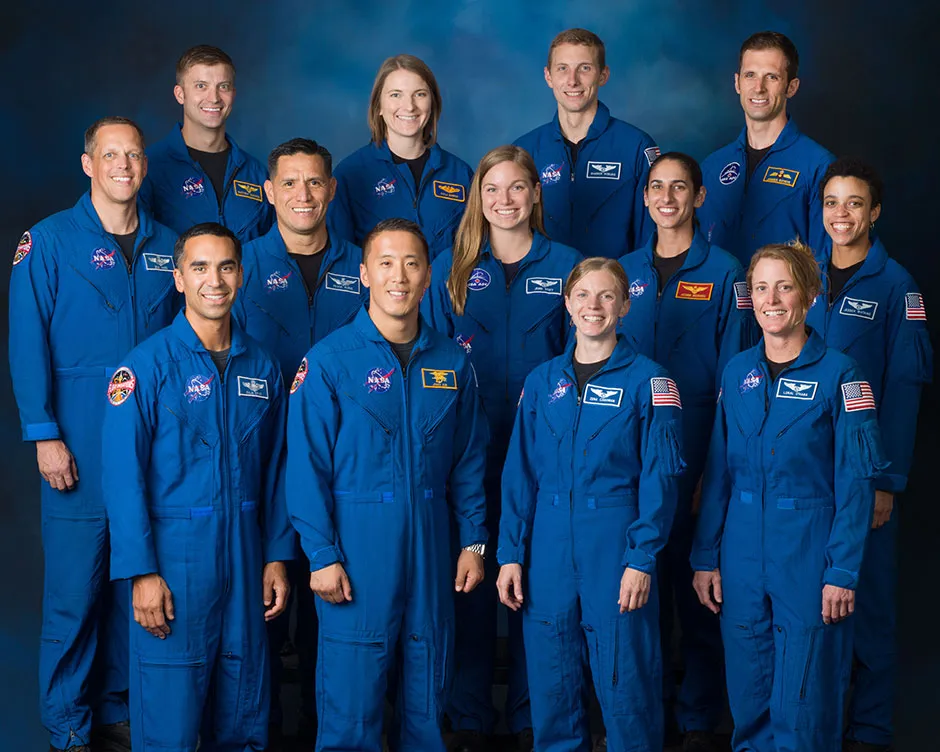
Johnson Space Center, Houston, US, January
The first class of astronauts graduated under the Artemis programme, setting them on a career path that could include visits to the International Space Station (ISS) or even the Moon. The new graduates completed more than two years of basic training, which included spacewalk instruction, robotics, ISS systems, Russian language and T-38 jet plane proficiency.
The Artemis programme is going to land the first woman and the next man on the Moon by 2024, using new technologies that will allow even more exploration of the lunar surface. The aim is to then get boots on Mars.
Burning issue
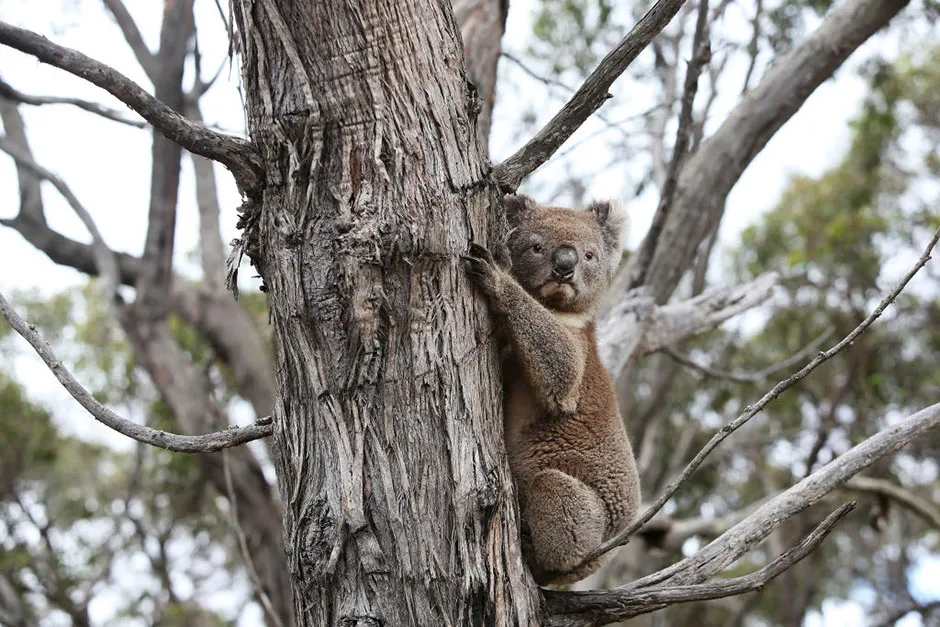
Kangaroo Island, Australia, 21 February
At the end of 2019 and the start of 2020, Australia experienced devastating bushfires in what has become known as ‘Black Summer’. The blazes were fuelled by months of hot weather and severe drought, with more than 18 million hectares of land being burned. The impact on wildlife was devastating, with scientists predicting that almost three billion animals perished or lost their homes in the fires.
South Australia’s Kangaroo Island, which is renowned for its diversity, lost tens of thousands of animals. About 60,000 koalas are thought to have lived there before the fires, with as few as 5,000 now remaining.
Here, a koala that was injured in the fires is being released back into the wild, following treatment at Kangaroo Island Wildlife Park.
Raining Fire
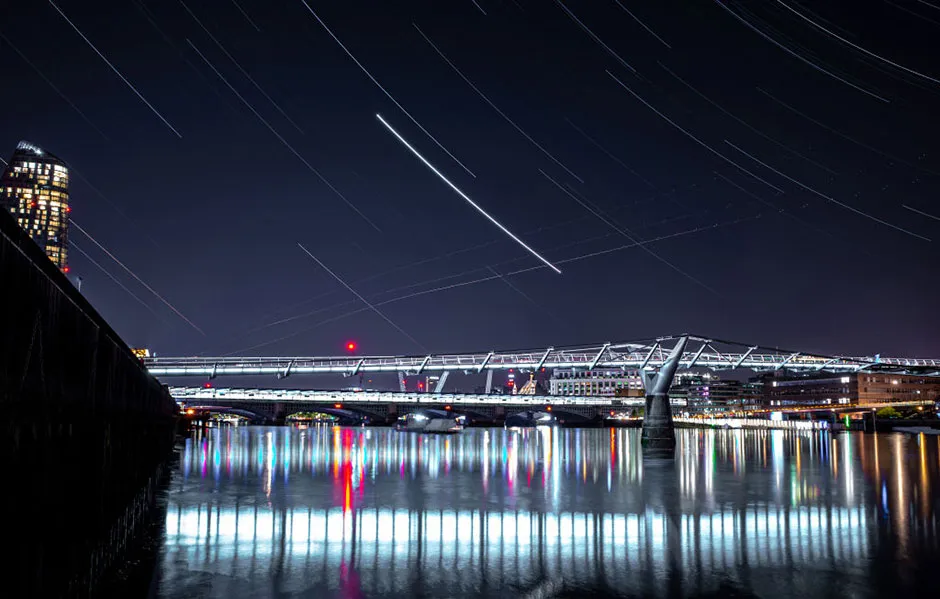
Millennium Footbridge, London, UK, 21 April
The capital is illuminated by the annual Lyrid meteor shower, with up to 18 shooting stars bursting across the night sky each hour. Occurring 16-25 April every year, the celestial fireworks are caused by debris from the Thatcher Comet falling into our atmosphere at speeds of around 43 miles per second.
The comet, essentially a giant ice ball, is expected to return to the inner solar system in 2276 after a 415-year orbital period around the sun. The Lyrids are the oldest reported meteor shower in human history, with sightings first recorded in 687 BC.
The new normal
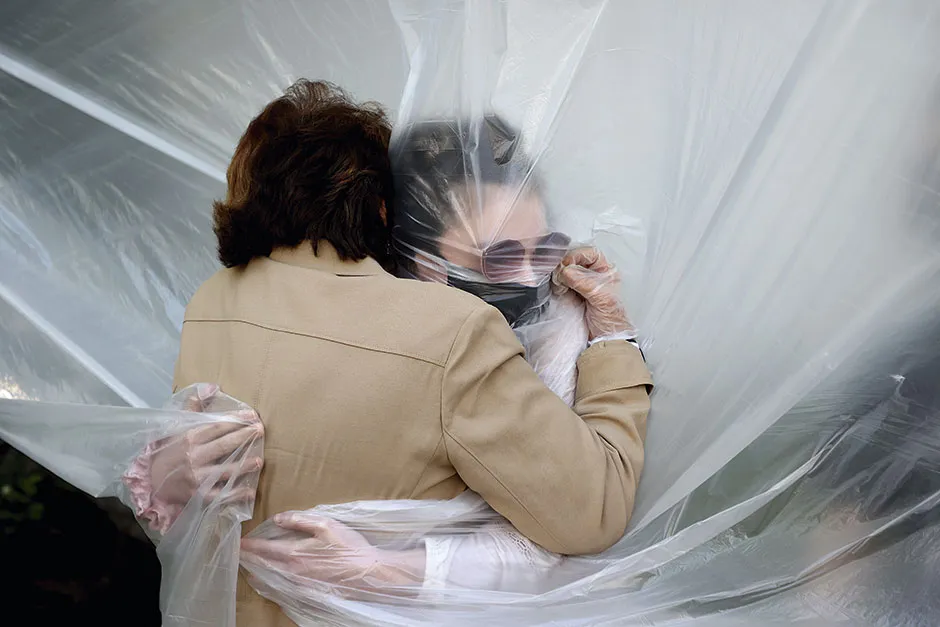
New York, USA, 24 May
A woman hugs her grandmother through a plastic sheet draped over a clothesline during Memorial Day weekend in New York. By May, the city had been in lockdown for around three months and the photographer caught the pair’s first meeting since it began.
It’s thought the first case of COVID-19 was recorded on 17 November 2019, according to documents discovered by the South China Morning Post. The discovery of a novel virus was only announced a month later. Just over a year later, scientists are poised to deploy a range of coronavirus vaccines to fight the disease. This incredible feat is testament to how vital the science sector and universities are to our collective future.
Ready for launch
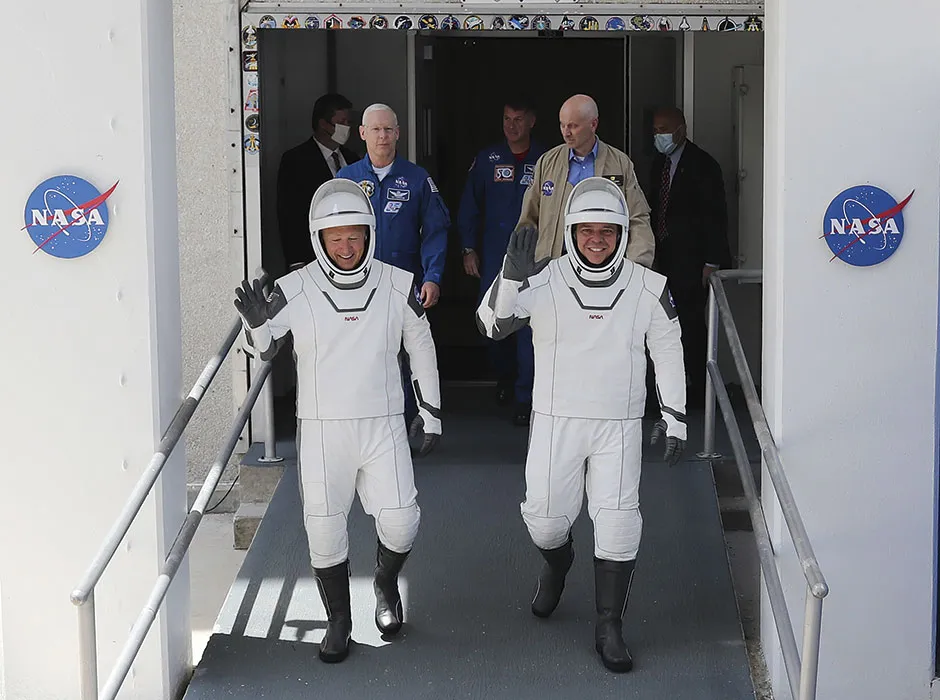
Florida, USA, 30 May
On 30 May, after a delay of three days, Elon Musk’s company SpaceX launched the first crewed mission from US soil in nine years, following the end of the Space Shuttle programme in 2011. The Crew Dragon capsule successfully docked with the International Space Station approximately 19 hours later, making SpaceX the first private company to launch humans into orbit.
In this image, astronauts Doug Hurley (left) and Bob Behnken leave the Operations and Checkout Building and head towards SpaceX’s Falcon 9 rocket.
Passing through

Lhasa, Tibet, 21 June
A solar eclipse passed across Central and Eastern Africa and South Asia, just a day after the summer solstice. It was an annular eclipse, where the Moon blocks all but a narrow ring around the Sun’s edge. This occurs because the Moon’s orbit around Earth is elliptical, not circular, so sometimes it appears slightly too small to completely cover the Sun.
This shot was taken as the eclipse passed over Lhasa, the capital of the Tibet Autonomous Region. Not being directly beneath the eclipse’s path meant the full ring wasn’t visible. Instead the city was treated to a stunning crescent.
Handle with care
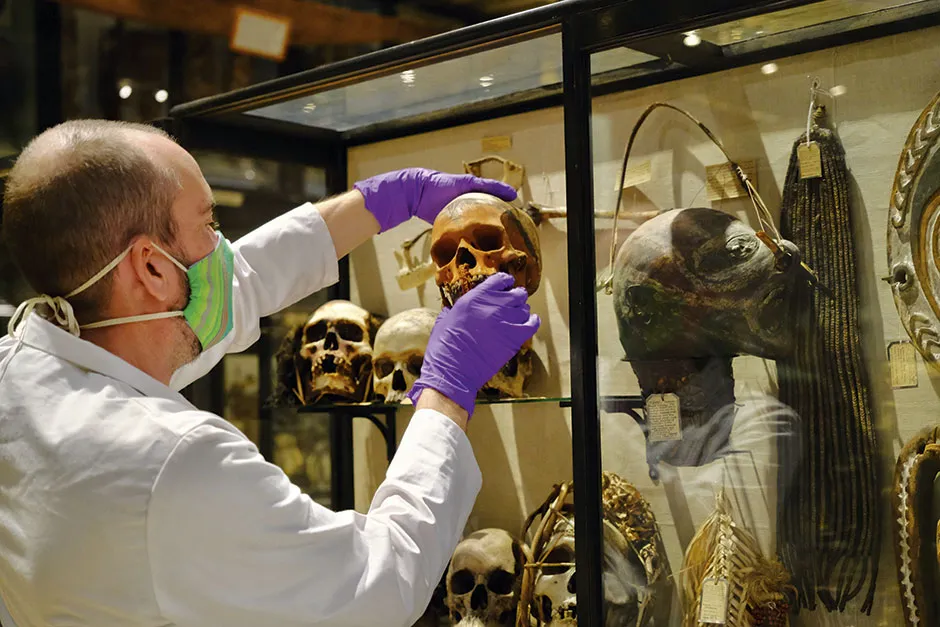
Oxford, UK, 1 July
The Black Lives Matter movement caused changes this year. Statues of figures associated with slavery were torn down, and buildings named after eugenicists and slave traders were retitled. The Pitt Rivers Museum in Oxford changed, too, agreeing to remove human artefacts from its visible collection.
“Rather than enabling our visitors to reach a deeper understanding of each other, the displays reinforced racist stereotypes,” wrote the museum in a statement. “By removing human remains from display we seek to show our respect for the communities around the world with whom we work.”
Venetian wall
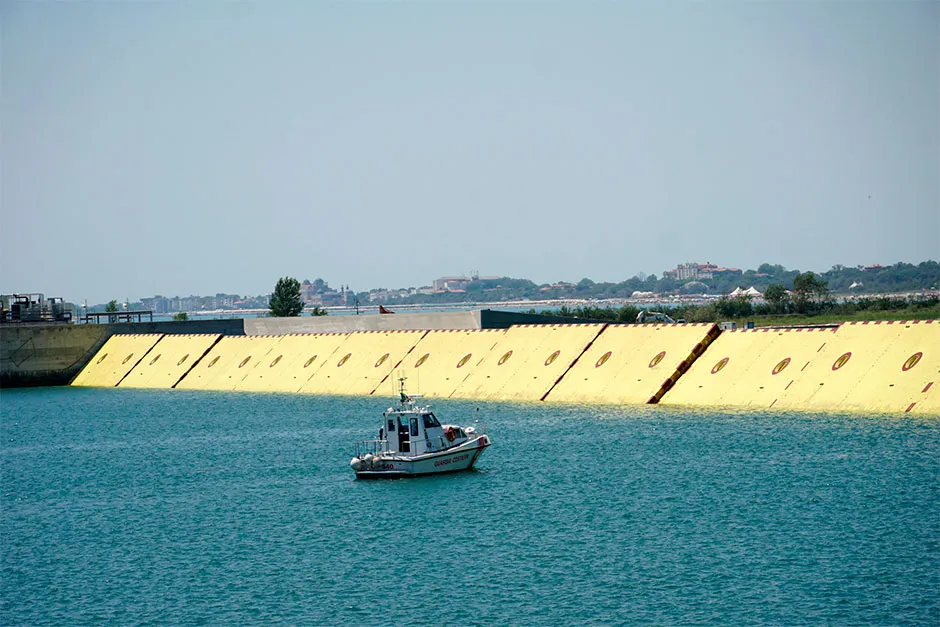
Venice, Italy,10 July
The Mose flood barriers are deployed for the first full test. The system activates when poor weather conditions and a high tide leave the ancient city in danger of flooding.
The system is formed by a series of barriers located at the inlets of Lido, Malamocco and Chioggia, which protect the lagoon in which the city is located from the rising tides of the Adriatic Sea. The gates are made up of hollow, metal box-like structures connected to a heavy concrete base by a hinge.
Under normal conditions the boxes are filled with water and rest on the seabed. When a high tide is forecast, compressed air is pumped into the hollow boxes, which displaces the water and causes them to hinge up and form a barrier to prevent water entering the lagoon.
Rising tide

Hubei Province, China, 19 July
A security guard checks his smartphone as floodwater is discharged from the Three Gorges Dam, on China’s Yangtze River. The dam was built to alleviate flooding, generate hydroelectric power and create access for ships. But this summer, the structure was put to the test when the water rose to its highest levels since the dam was completed in 2006.
The rising water levels were due to an exceptionally wet rainy season across large areas of China, which affected millions of people and caused hundreds of deaths. News outlets reported that these were the worst floods experienced by the country since 1996.
Flying visit
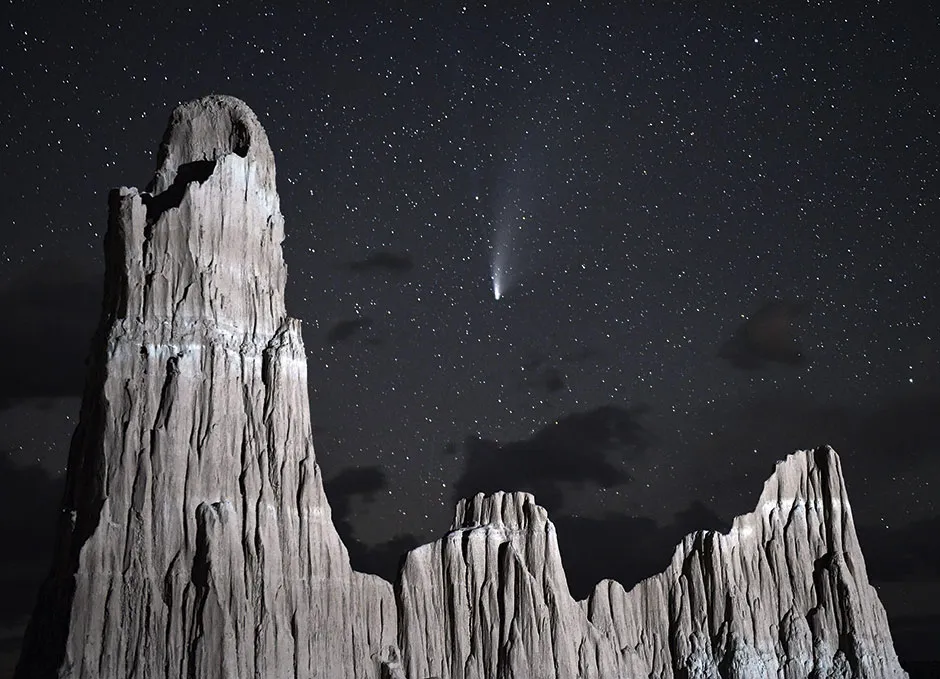
Nevada, USA, 23 July
Comet NEOWISE had stargazers eagerly searching the skies in July – including some frustrated members of the BBC Science Focus team who didn’t manage to spot it.
Discovered in March by NASA’s Near-Earth Object Wide-field Infrared Survey Explorer telescope (after which the comet is named), it made its closest approach to Earth on 23 July, before heading off on a highly elliptical orbit that won’t bring it back into the inner Solar System for another 6,800 years. NEOWISE was the brightest comet in the northern hemisphere since Hale-Bopp in 1997.
The aftermath
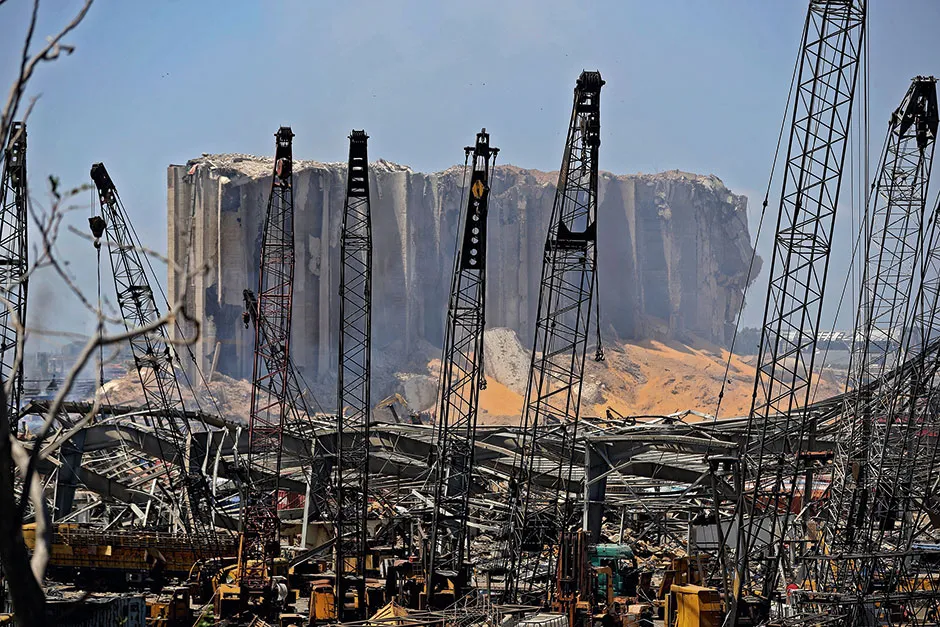
Beirut, Lebanon, 5 August
On 4 August, a blast from tonnes of ammonium nitrate destroyed a large part of Beirut. Ammonium nitrate is mostly found in fertilisers, but can be used to create explosives.
As it’s relatively safe when stored securely, it’s unclear exactly what caused the explosion. The material may have been contaminated over time and subsequent contact with a fire resulted in the massive blast.
Beyond the death toll (believed to be 204 people) and physical damage, the nitrogen oxide gases released by the blast could lead to respiratory irritation and air pollution.
Black and blue
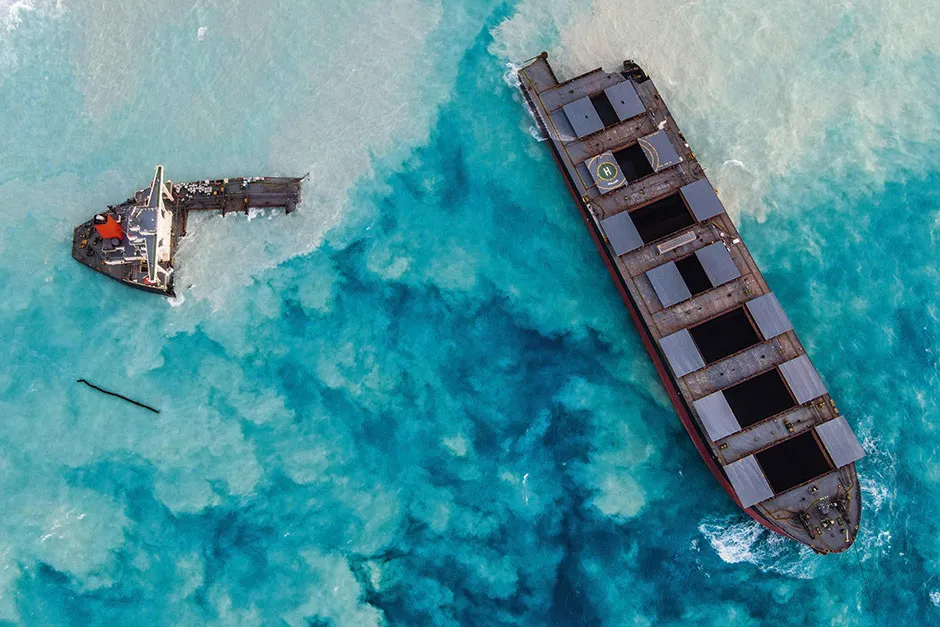
Pointe d’Esny, Mauritius, 17 August
Oil leaks into the sea around Mauritius from the MV Wakashio, a Japanese-owned cargo ship that ran aground on a coral reef while en route to Brazil.
Mauritian seas host a wide range of unique species, so the resulting pollution from the oil released threatens thousands of animals and plants. Coral bleaching from hydrocarbons in the oil will also damage the species that rely on the coral reefs. As Mauritius’s biodiversity attracts a large number of tourists, it is expected that that part of the economy will suffer as a result of the spill.
The fires rage
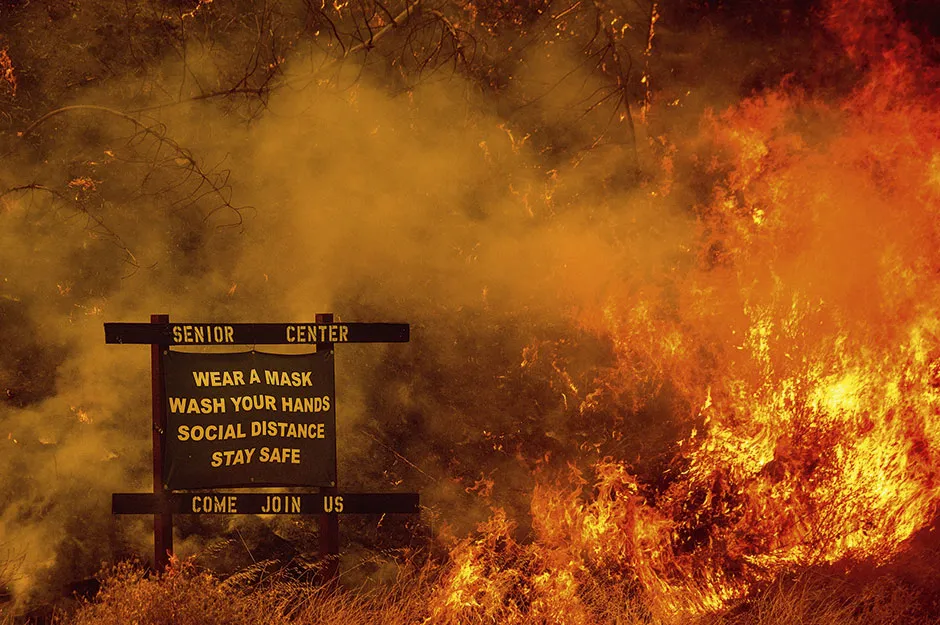
Napa County, California, 18 August
The West Coast of America experienced the worst wildfire season in at least 70 years this summer. The blazes wiped out around three million hectares of forest (an area 1.4 times the size of Wales) and burned through residential areas like this one near Lake Berryessa in California.
Now the fires have subsided, scientists are working to understand their impact. Fires are not all bad news; some species thrive in the aftermath, as fresh growth and newly cleared areas provide feeding grounds for grazing animals. But invasive species can also creep in during a forest’s recovery, preventing young trees and bushes from establishing, which will have knock-on effects for the region’s wildlife.
Making waves
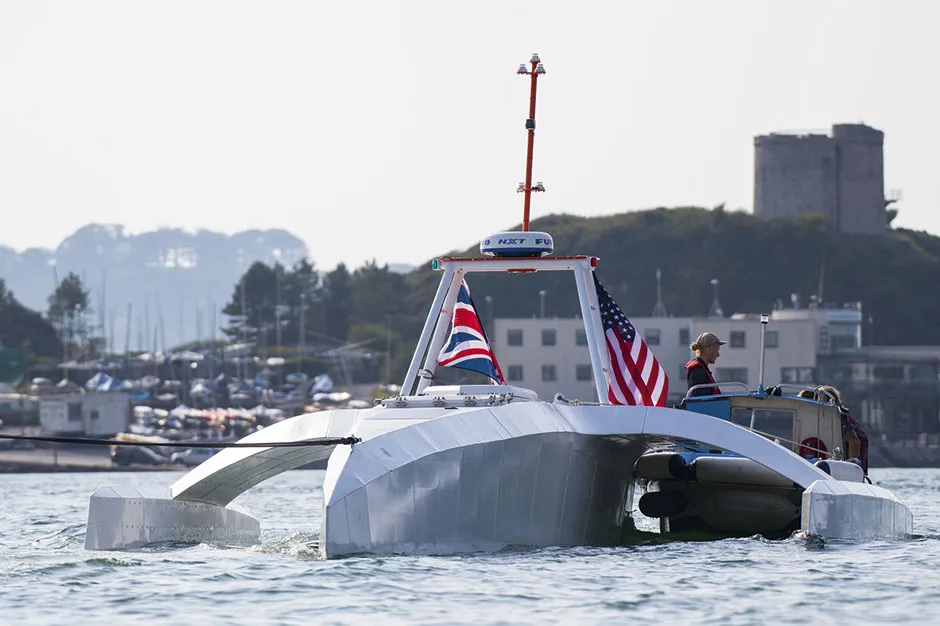
Plymouth, UK, 16 September
It took the Mayflower 66 days to cross the Atlantic when the pilgrims set off for the New World 400 years ago. In April 2021, a new ship sharing the name is aiming to complete the same journey in just two weeks.
But this Mayflower (seen here being tested in the waters off Plymouth) won’t be carrying anyone, passengers or crew, as the 15m (50ft) trimaran is piloted by artificial intelligence.
Fly to the rescue
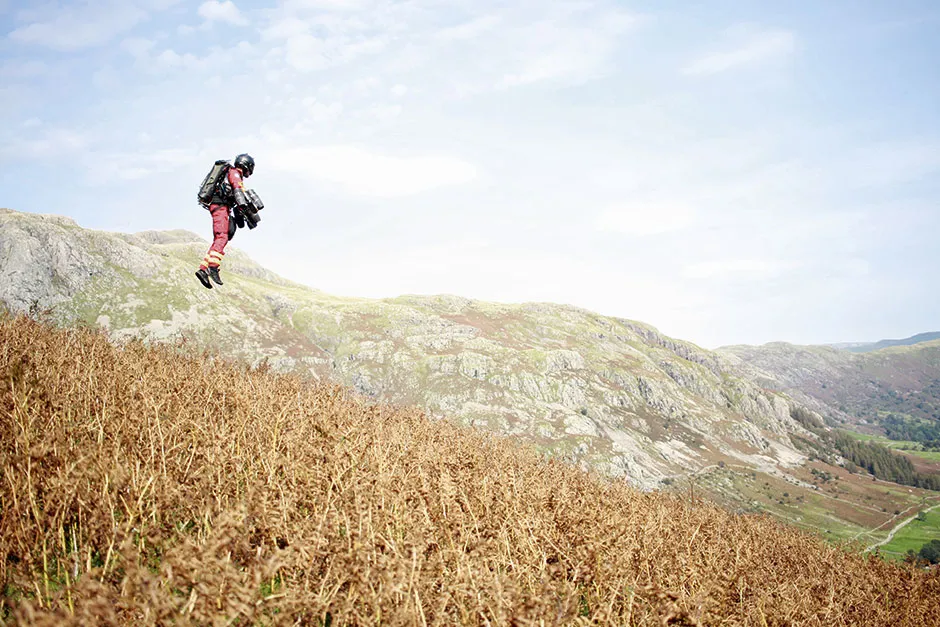
Lake District, UK, 29 September
Difficult terrain and steep hills can slow down paramedics’ response times. The Great North Air Ambulance Service wondered if jet suits could speed things up, so approached jet-suit manufacturer Gravity Industries to find out.
In the test flight in the Lake District, a jet-suited paramedic flew from the valley floor to a ‘patient’ on the top of a fell in 90 seconds. The journey would have taken 25 minutes on foot.
Blue sky thinking
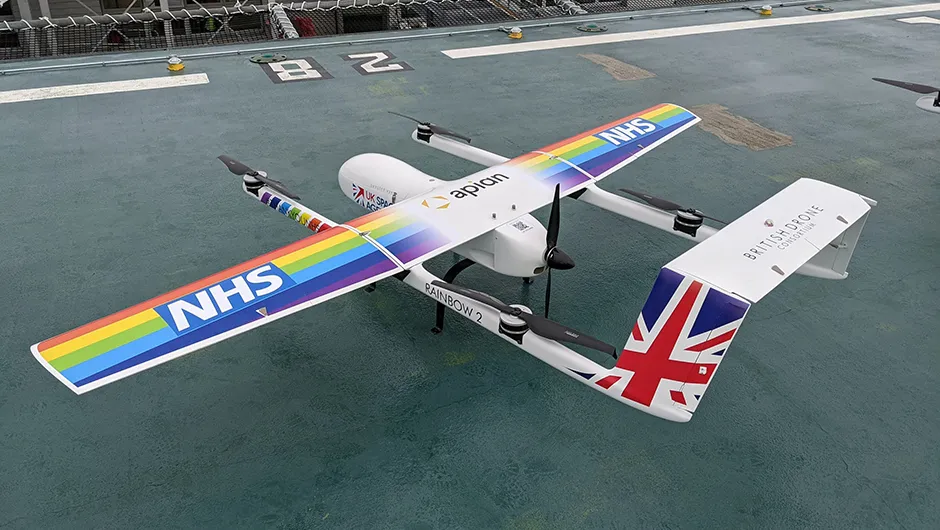
Chelmsford, UK, 18 October
With the potential for a second lockdown on the horizon, it was clear that the UK needed to speed up its testing system. That’s where two junior doctors with a passion for aviation hoped to step in.
Their company, Apian, aims to set up a network of safe air corridors for drones carrying vital medical supplies or urgent test samples. In October, they received £1.3m of funding from the UK Space Agency to take off and trial the idea during the pandemic, accelerating their plans by a few years.
The drones will be piloted by ex-military jet or helicopter instructors and will ferry samples between labs and hospitals in Essex at first.
Musk’s moonshot
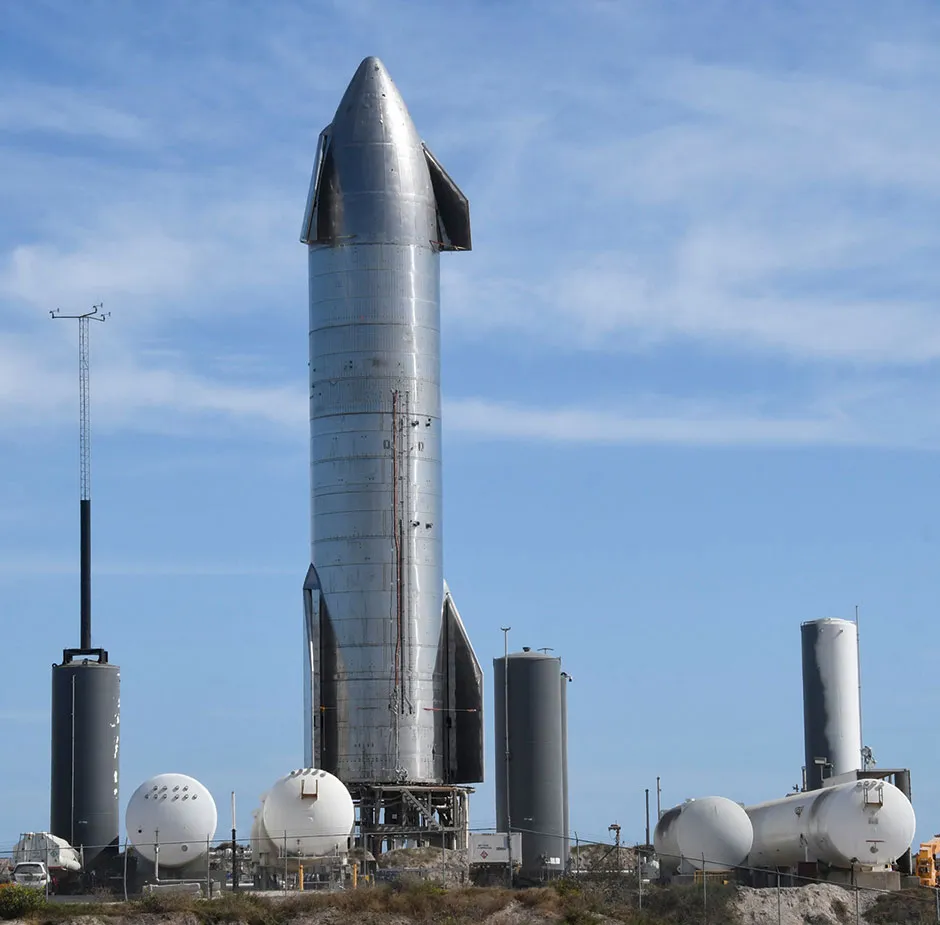
Texas, USA, 11 November
SpaceX unveiled the Starship – a prototype reusable spacecraft – at its Texas launch facility in 2019. SpaceX founder Elon Musk stated his ambition for the vessel to carry crews of up to 100 astronauts first to the Moon, and then to Mars and beyond. In November this year, the craft was exposed to further testing, including the firing of its engines, ahead of undertaking a test flight.
The Starship spacecraft has been designed to carry passengers or cargo, such as satellites, into orbit depending on the mission. It’s the second stage of a launch system that will sit on top of a Super Heavy booster stage for launch.
The first private Starship passenger, Japanese billionaire Yusaku Maezawa, is pencilled in for a trip around the Moon and back in 2023.
See more amazing photo galleries: